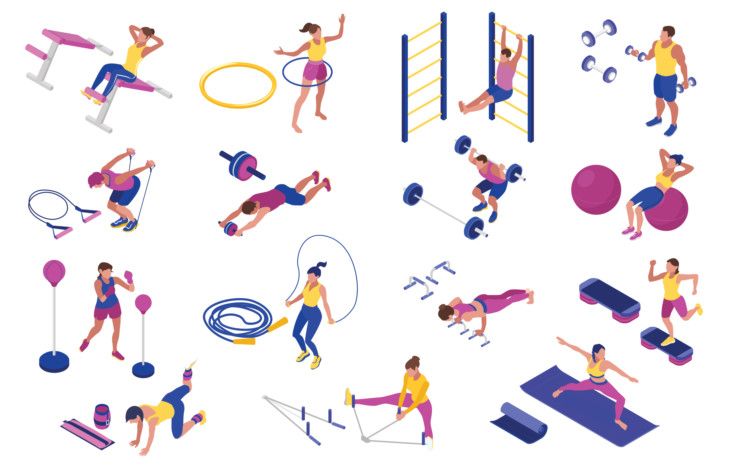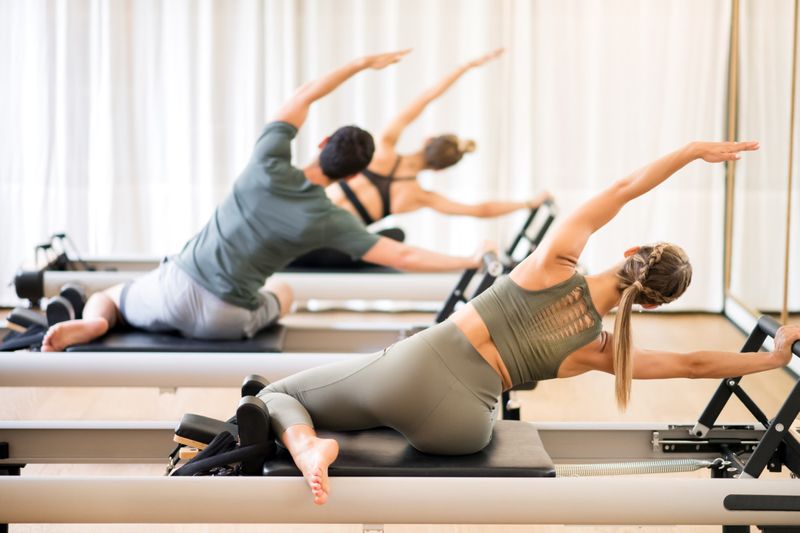
In late autumn 2020, more than six months into the pandemic, Irene Huston, a customer service manager in the US, won a month’s worth of classes at a fitness studio that combines low-impact rowing with floor-based strengthening exercises.
Huston, who was 59 at the time, had undergone a full hip replacement and back surgery in the past few years, and though she was working on building healthy habits, she was struggling to add in exercise. “I have never been able to exercise for more than a few months at a time, because I always got bored,” Huston said, adding that no one in her family did any sports or regular exercise.
Rowing seemed like a good place to start, as it was low-impact enough to avoid hurting her joints. Although the classes were hard in the beginning, the instructors were supportive, and the exercises were structured such that she could work out at her own level.

At the end of the month, she decided to continue. She was feeling better than she had in years, and her weight had begun to drop.
Starting a fitness routine is hard. Huston, like so many others, has spent most of her adult life trying one thing after another, only to give up after a few months. Finding the time can be hard, as can be finding an activity that you enjoy, along with the necessary support to get started in a safe, sustainable way.
An exercise routine can help with stress management, improve sleep quality and help protect against a number of chronic health conditions, experts say. Exercise also plays an important role in weight maintenance. “There isn’t a physiological system in our body that isn’t improved by being more physically active,” said Cedric Bryant, president and chief science officer of the American Council on Exercise, a nonprofit organisation that provides training and accreditation for exercise professionals and health coaches.
But where and how to start? If you’ve never been physically active before, or if you used to be active, but have since gotten out of shape, starting up a fitness routine can be intimidating.
Start slow and stay consistent
The most important thing about starting an exercise routine is consistency. “Start low and go slow,” Bryant said. “Think about doing half to two-thirds of what you were doing before you went through a prolonged period of inactivity, and see how your body responds to that.”
This doesn’t mean working out until exhaustion every day, but rather putting in a consistent effort, one that will help build your fitness level over time.
“Sometimes you just have to give yourself permission that not every session of exercise has to be an all-out sweat fest,” said Christie Ward-Ritacco, an associate professor of kinesiology at the University of Rhode Island. “Giving yourself permission to do little bouts of activities that get your heart rate up is a wonderful way to just get started.”
A good gauge of whether you are working too hard is if you can’t talk during your workout, Bryant says. Several hours after the workout is done, you should feel as though you can do another one. If not, that’s a sign you worked out too hard.
It’s also important to have the right support, whether it’s attending a group class with a knowledgeable instructor, asking the staff at your gym for advice or hiring a personal trainer who can offer guidance. “Don’t be afraid to ask for help,” Ward-Ritacco said. “Exercise professionals are there to help you.”
Strive for balance

You want to strive for a balanced fitness routine, one that incorporates aerobic conditioning, strength training and mobility work, as this will help you stay healthy and injury-free for the long term.
“If you are constantly focusing on resistance training and lifting all the time, sooner or later, you are going to get a muscular injury. If you are focusing only on flexibility, sooner or later you are going to get hurt because you aren’t strong enough to do certain movements,” said Femi Betiku, a physical therapist and Club Pilates instructor. “If you don’t have cardiovascular endurance, sooner or later you’ll see other issues happening.”
Although balancing all of this may sound intimidating, it is achievable, whether it’s adding in a little strength training and stretching to a workout routine that primarily focuses on cardio, or trying to find classes that incorporate a mixture of all three.
The important part is to aim for a little of each. “It doesn’t have to be these marathon workouts,” Bryant said.
For Betiku, one of the reasons he became a Pilates instructor was because many of the exercises he uses as a physical therapist originally came from Pilates. He realised that incorporating these exercises into a regular workout routine can help ward off injuries, especially if you are just starting out.
“The reason Pilates is such a great exercise to start with is because it helps to promote good muscular strengthening, it helps to promote flexibility and mobility, and it helps to promote overall endurance,” Betiku said.
For Huston, the rowing improves her cardiovascular functioning, while the floor exercises work on strength and mobility. Even if you aren’t generally a fan of either aerobic exercise or strength training, the options are diverse enough that there is probably a form out there that you will enjoy.
Find an activity you enjoy

As beneficial as exercise can be, if you don’t enjoy it, you won’t stick with it. “After the third week, do you feel like you are dragging yourself to get there or can you literally not wait to get there?” Betiku said.
If the answer is that you have to force yourself to the gym, that’s a sign you need to look for a different type of activity. The key is to keep trying until you find something that clicks, which will look different for everyone.
“It’s a combination of trying things that you feel comfortable with, and trying things that challenge you, that over time you may love them,” Ward-Ritacco said. “It’s really important to find something that makes you feel good when you do it.”
Although finding the time for exercise can be hard, Ward-Ritacco’s advice is to take a close look at your schedule, and think about what time would work best for you, whether it’s a morning workout to wake you up, a midday workout to beat the afternoon slump or an evening workout to decompress from the stresses of the day. “Schedule it into your day, just like you would any other meeting, because once it’s on the calendar, it’s a little less negotiable,” Ward-Ritacco said. “Most people thrive with routine.”
For Huston, it’s the camaraderie of rowing, combined with the physical and mental benefits of exercise, that has kept her going back.
More than a year in, she’s dropped an additional 27 kilos, going from a high of 136 kilos to 86 kilos, and gained other benefits such as being able to move more easily and having more energy.
Her blood pressure also has improved, she says. She no longer needs as many of the pain medications she had to rely after her surgeries. And in a year that has included both a pandemic as well as her husband having two strokes, exercise has helped her deal with these stresses in a productive way.
“Rowing takes some of the edge off,” Huston said. “I need the outlet for the angst.”












